HISTORY + MISSION
Massillon Museum is a cultural hub where art and history come together.
Museum Overview
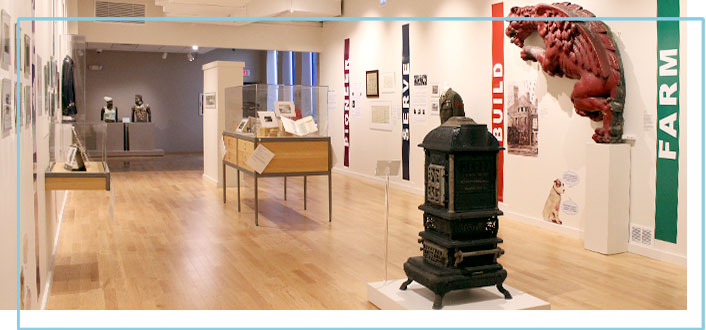
The Massillon Museum, a local art and history museum, has major collections of photography; costumes and textiles; china, glass and pottery; domestic appliances; and circus memorabilia. The Museum was first accredited in 1972 by the American Association of Museums (now the American Alliance of Museums) and has continued to be accredited by the AAM since that time. Our permanent collection contains over 100,000 items, mostly gifts from the community.
Learn more about our permanent collection.
Statement of Intention regarding Diversity, Equity, Accessibility, and Inclusion:
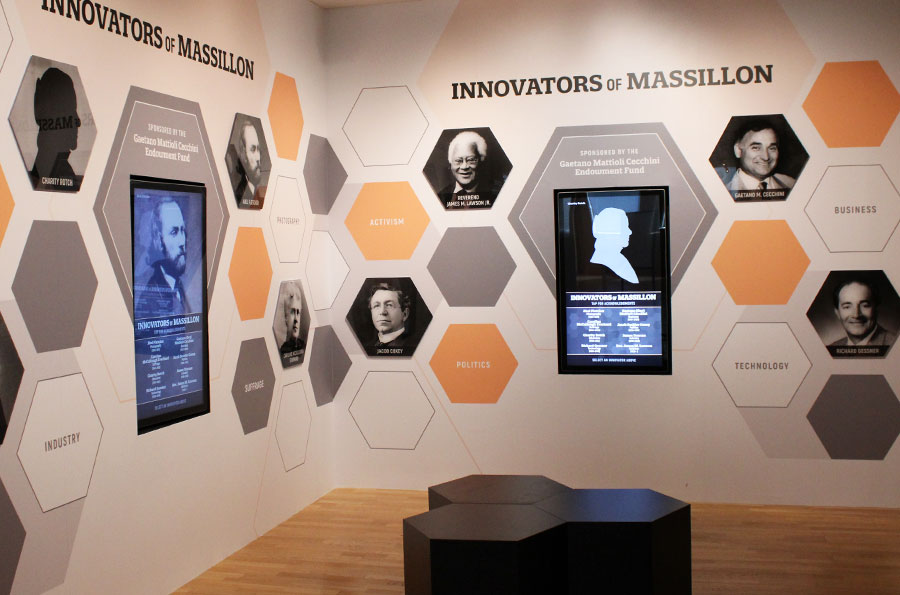
Diversity, Equity, Accessibility, and Inclusion (DEAI) are all interconnected.
Massillon Museum’s staff and board of directors developed this statement to define our culture, provide guidelines, and hold accountability for our actions, decisions, and efforts to live our mission as a cultural hub. Other art and history museum policies further explore important tenets of our belief in fostering a space in which DEAI thrive. Committees within the Museum allow for facets of this document to be explored with greater specificity. This statement was created to reflect our efforts to create a culture of museum advocates and our desire to build trust. It is intended to be revisited frequently to ensure flexibility in assessing and implementing content and actions as the scope of DEAI initiatives evolve within society.
The Massillon Museum implements diversity through the nurturing of acceptance and acknowledgment of the vast and beautiful differences that construct our world, as represented in members of our community, our patrons and supporters, volunteers, staff, and board members; in style, subject matter, and material of artwork; in programming for a wide range of ages and skill sets; in collections and archives; in exhibition content and presentation; and in provision of broad opportunities for participation and engagement.
The Massillon Museum implements equity through respecting language associated with identity throughout all forms of communication; in the context of exhibitions, programming, interpretation, marketing, and advocacy; and through facilitation and modification of program offerings and program composition for all abilities.
The Massillon Museum implements accessibility by providing physical and sensory accommodations; by making its programs available across a variety of platforms and communication channels; by eagerly accepting and providing new information and knowledge, listening, and hearing; through its practice of hiring and recruiting of staff, volunteers, and board members; through social media and website presentation; and through exhibition interpretation.
The Massillon Museum implements inclusion through removal of barriers to access, be they financial, physical, actual, or perceived, and as promotion of an environment in which everyone is welcome and admission is always free. This concept is manifested through being open to feedback; echoing diversity in our partnerships with artists, organizations, individuals, and agencies; and by providing opportunities for volunteers and others to participate regardless of ability.
(Statement approved by the Board of Directors February 2021)
Massillon Museum History
The Beginning: Founding of Massillon
James Duncan, born in 1789 in Concord, New Hampshire, took to the sea at an early age, as did many of his contemporaries, and rose to the command of a merchant ship. Like many of his contemporaries he gave up seafaring and took to exploring and establishing the West. At that time, Kendal was being settled by a Quaker community, led by Thomas and Charity Rotch, just east of what is downtown Massillon today. Although Mr. Duncan and his friends were complete strangers when they came here, they were soon made to feel at home by Mayhew Folger, another retired sea captain. They apparently were impressed with the situation for within three days they concluded to make a number of purchases.
When, in 1824, the legislature of Ohio enacted the Internal Improvement Law, he foresaw that whenever a canal was built in Ohio, it would be in the Tuscarawas Valley. The canal, after much maneuvering, was located in that valley due largely to Mr. Duncan’s untiring energy. With his usual shrewdness and foresight he suggested to the Commissioner of Ohio that he lay out a village on the east side of the river and convey to the State of Ohio an undivided third of the town plat. Under that arrangement Massillon was laid out. Mrs. Eliza T. (Vilette) Duncan was responsible for naming Massillon after a celebrated French Bishop in the court of Louis XIV.
James Duncan built his home in the early 1830s overlooking the booming canal town of Massillon, Ohio, which he had founded in 1826. In 1880, Dr. and Mrs. J.P. Barrick bought the house, which was later passed on to Mrs. Barrick’s son, Frank Lee Baldwin.
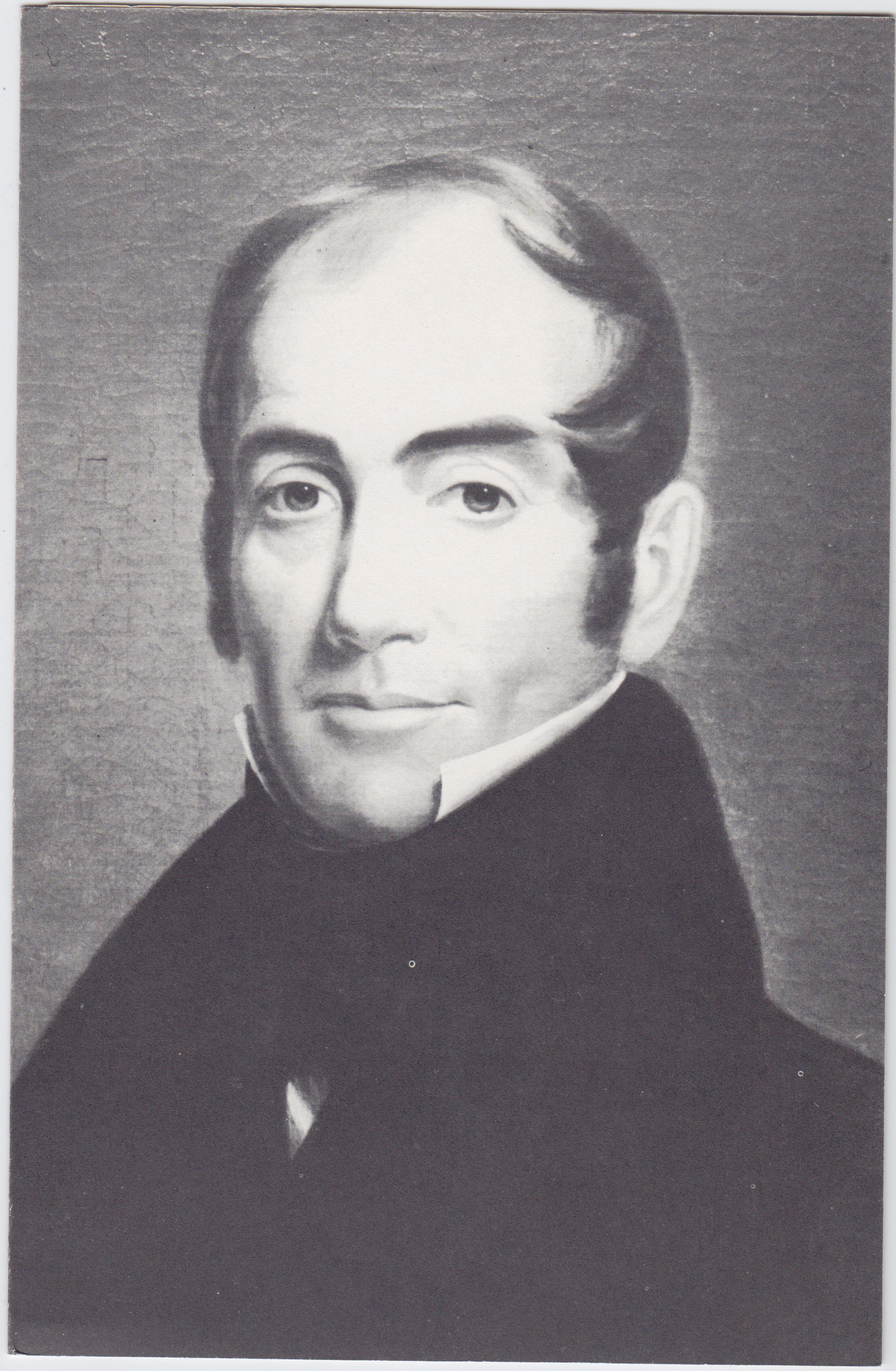
Pictured above is James Duncan, founder of Massillon, Ohio.
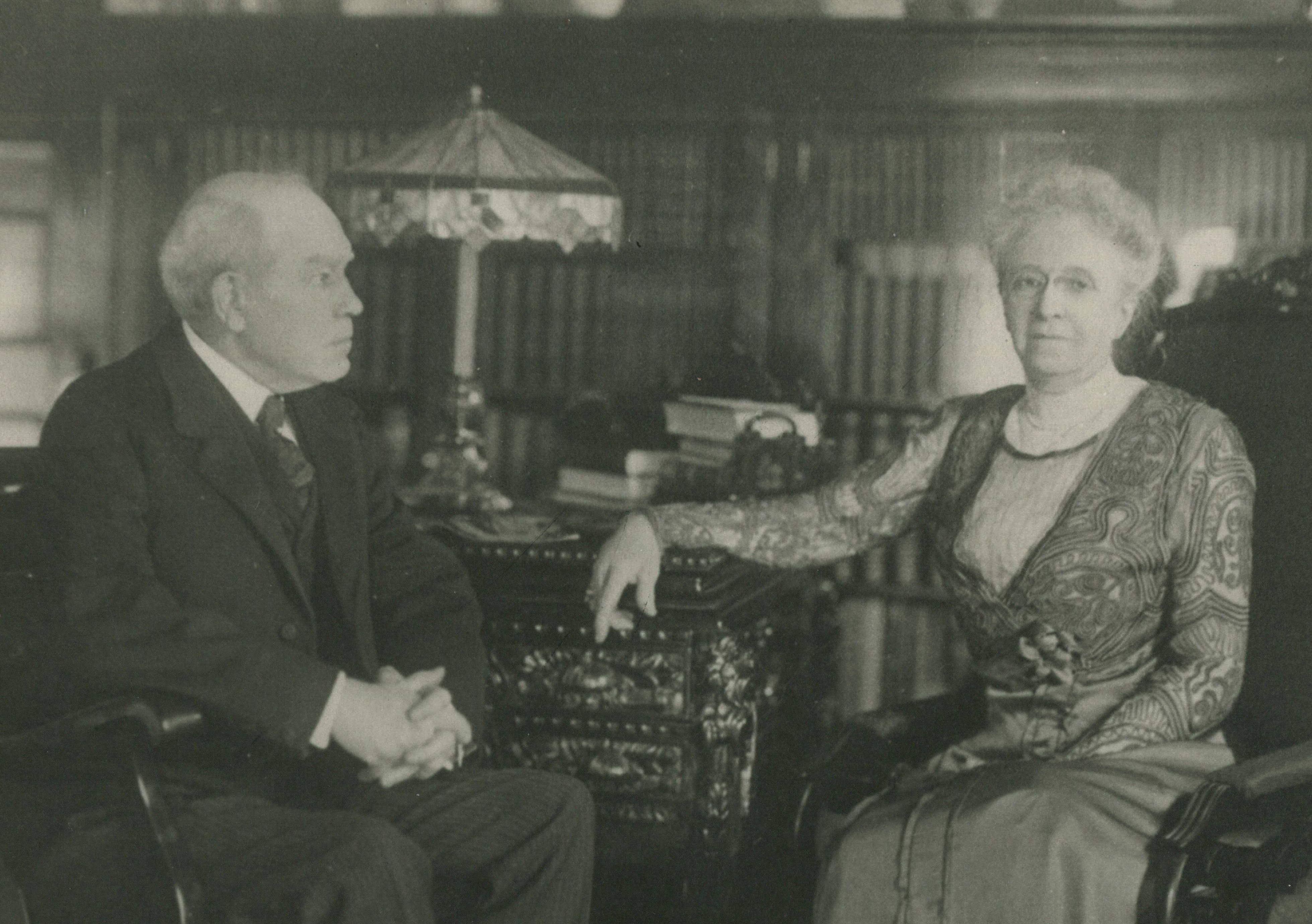
Pictured here is Frank Lee Baldwin and Annie Steese Baldwin. As she and her husband had planned, Mrs. Annie Steese Baldwin bequeathed the house and grounds for use as a museum and library.
MassMu's Beginnings: The Duncan Home
Shortly after founding Massillon in 1826, James Duncan built his grand home overlooking his booming canal town in the 1830s. This home was passed down to Frank Baldwin, a prominent local attorney. Upon Mrs. Annie Steese Baldwin’s death in 1931, the home was bequeathed to the Massillon Library Board. In order to fulfill the legal obligations of Mrs. Baldwin’s will, the Museum had to open by March 1933.
After an outcry of support from the community, thanks in part to the editorial writings of C.E. Chidester, the building was opened as an art and history museum. Originally named the Baldwin Museum, it featured the ethnological and archaeological artifacts of Dr. Abraham Per Lee Pease, that had been on display in the library building on Prospect (Fourth) Street since 1905, as well as the Native American artifacts of Captain Christian L. Baatz, the Museum’s first curator.
In an Independent newspaper article “Hail! Massillon’s Museum” from Thursday, January 12, 1933, the author (thought to be editor C.E. Chidester), states “The expected opening Friday of Massillon’s museum in the house built by the founder of the city, the late James Duncan and bequeathed to the citizens of Massillon by the late Mrs. Annie Steese Baldwin, its last owner and occupant, is certain to be greeted with joy. The museum to be opened to the public is destined if maintained, during the years to come to afford the citizens of Massillon immeasurable happiness and satisfaction. In every corner of the land from the largest city to the smallest village, reminders of the past have an appeal. It is not too much to hope that Massillon will create such a treasure trove. The opening of the Museum is destined to mark the beginning of a new activity in Massillon. It should be carried on with vigor and dispatch and with immeasurable joy.”
The Baldwin Museum opened on Friday, January 13, 1933, displaying Baatz Native American artifacts, and Dr. Abraham per Lee Pease’s ethnological and archaeological artifacts. The first visitor to sign the registration book was Captain Christian L. Baatz, a retired fireman, who was named the Museum’s first curator.
With the art and history Museum officially opened, the terms of Mrs. Baldwin’s will were fulfilled. The focus now turned to making the museum successful. A committee under the chairmanship of Miss Bessie V. R. Skinner was appointed, including members of the library board Samuel J. Mollet, and Hershey Meek, with A.J. Albright as secretary and treasurer.
Miss Ruth A. Hubbard was named director, serving from June 1934 until August 1935. She was formerly employed at the Cleveland Museum of Natural History. Her major contributions to the Museum were the initiation of pottery and painting classes and the regular rotation of exhibits. Three volunteers stepped forward to assist in oversight of collections and exhibitions: Albert Hise, Frank Harrison, and Betty Traphagen.
The Baldwin Museum opened on January 13, 1933, exhibiting Captain C.L. Baatz’ Native American artifacts and the Pease Archaeological and Ethnological collection.
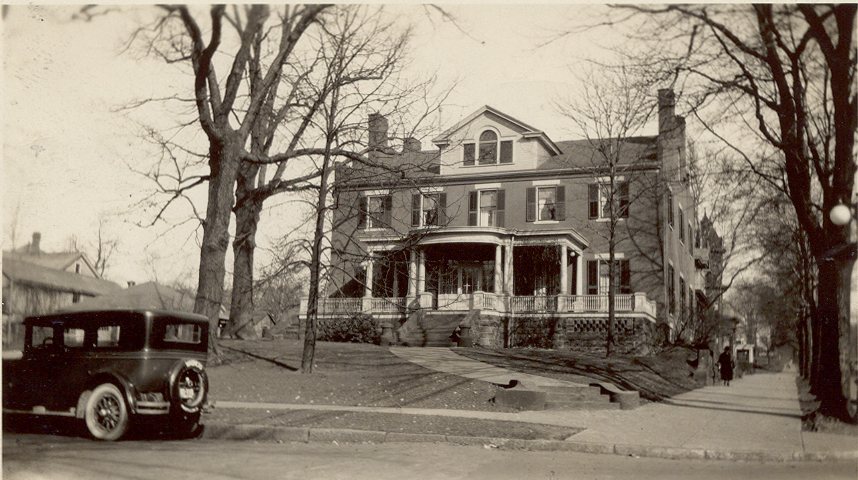
This photo shows the Duncan/Baldwin Home as it was in 1935. The original home had been altered with the addition of a porch, and various windows.

This sign hung beside the A.P.L. Pease Archaeological and Ethnological Collection, first displayed in 1905 in the McClymonds Public Library (predecessor to the current Public Library). The collection was then donated to the Library/Museum before Pease's death in 1926.
“The opening of the museum is destined to mark the beginning of a new activity in Massillon. It should be carried on with vigor, dispatch, and with immeasurable joy.”
— taken from “Hail! Massillon's Museum,” Massillon Independent newspaper, January 12, 1933
The Museum closed in June and July 1934 for exhibit planning and cataloging of objects. The science room was setup, exhibiting snakes and other creatures, an early Massillon exhibit, and a reproduction coal mine in the basement. Local boy scouts led tours through the exhibit.
A battle ensued between the staff of the Massillon Independent newspaper, library board members, Museum Committee, and citizens over how to expand the museum building to include the public library. Two plans were drawn up: one to build a library in front of the Duncan/Baldwin home or demolish the home for a more modern structure, and one to build an addition that would leave the Baldwin house intact.
The Museum Committee passed a resolution on December 12, 1935 recommending “In view of the feuding reconstruction of the Museum that the contents of the Museum be packed and removed to the quarters kindly provided by Mr. Mollett. Further that the employees of the Museum be dismissed with the exception of Mr. Hise who will continue the work of the Museum, cataloging, doing [historical] research with the view to increase the Museum Collections etc.”
Local architectural firm Albrecht & Wilhelm drafted a proposal for an “L” shaped building that incorporated the original Duncan/Baldwin home with a similar wing, joined together by a rotunda in the center. This is the plan that was officially and unanimously approved by Massillon Public Library board members. The result is the building we see today.
Museum Curator Christian Baatz and his wife lived in the Duncan/Baldwin home until construction began in 1936, when they moved to a home on Cherry Street. Unfortunately, both Mr. and Mrs. Baatz passed away in 1937, never getting to see the finished Museum.
Using the Baldwin seed money, a WPA grant, a library bond issue, and a small loan, construction finally began. On the afternoon of Wednesday, May 27, 1936 an official cornerstone laying ceremony took place. A parade by the American Legion, Washington High School band, and hundreds of school children opened the program with a march through Massillon’s business district. Several thousand children and adults attended the ceremony. The cornerstone was officially laid by Dr. H.W. Bell, president of the Board of Education. Rev. J.R. Stalker delivered the official address, followed by Sherlock Evans speaking for Mayor Henry Krier, and several other congratulatory speeches were given. Photographs of the old library and museum and a copy of the Massillon Independent were entombed in the cornerstone.
The library reopened in October 1937, while the Museum remained under construction until a reopening ceremony on April 3, 1938, exhibiting Abel Fletcher photographs, the Ella O. Shoemaker shell collection, the “Vigilant” hand-pumped fire engine, paintings and furniture. Its new name was the "Massillon Museum."
If you would like to read more about the reopening of the Massillon Museum in 1938, please click here.
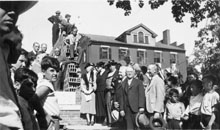
Cornerstone Laying, May 27, 1936
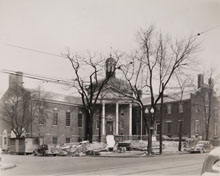
The new joint Museum and Library building were designed by the architects Wilhelm and Albrecht. This photograph shows the building shortly after completion of construction in 1937.

Stationery used in early 1930s

Stationery used in early 1930s
Exhibits for the art and history Museum tended to focus on regional artists, rented exhibits from larger institutions, and vignette-style exhibits highlighting the permanent collection. Education in the form of childrens' and adults' classes, tours, and outreach boomed during the 1950s to 1970s.
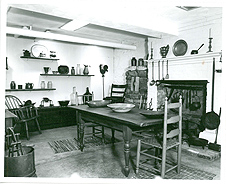
Pioneer Kitchen exhibit, c. 1960s
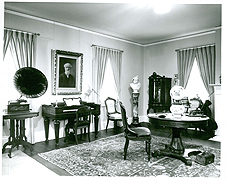
Victorian Parlor exhibit, c.1960s
Funding
The art and history Museum was, from its inception, funded by county intangibles tax that was directed through the Massillon Public Library. When it became apparent that the Museum could not continue its quality service to the community within that budget, the Museum director and board members succeeded in working with state legislators to pass legislation permitting Ohio museums to place tax issues on the ballot. As a result, the Massillon Museum passed a tax levy within the city of Massillon and is now supported by property taxes from the citizens of the community.
New Building
In 1991, it became evident that more room to house the collections was imperative. The State of Ohio had given $750,000 towards a new building so plans were formulated to either build or buy a new museum. In April 1991, the Board of Trustees purchased a former department store in the center of town called the Giltz Building. A capital campaign fund drive for funds to remodel was launched in 1992.
The architectural firm of vanDijk, Pace, Westlake and Partners of Cleveland was contracted for remodeling plans and a $1.9 million dollar renovation was begun in 1994. On May 12, 1996, the new “state of the art” contemporary Massillon Museum opened its doors to the public with a “Gala Opening” and exhibit.
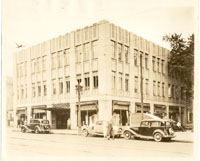
Giltz building in the 1930s as Gensemer Brothers Dry Goods Store
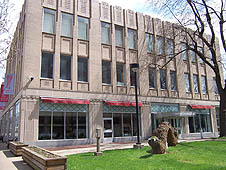
Massillon Museum, 2007
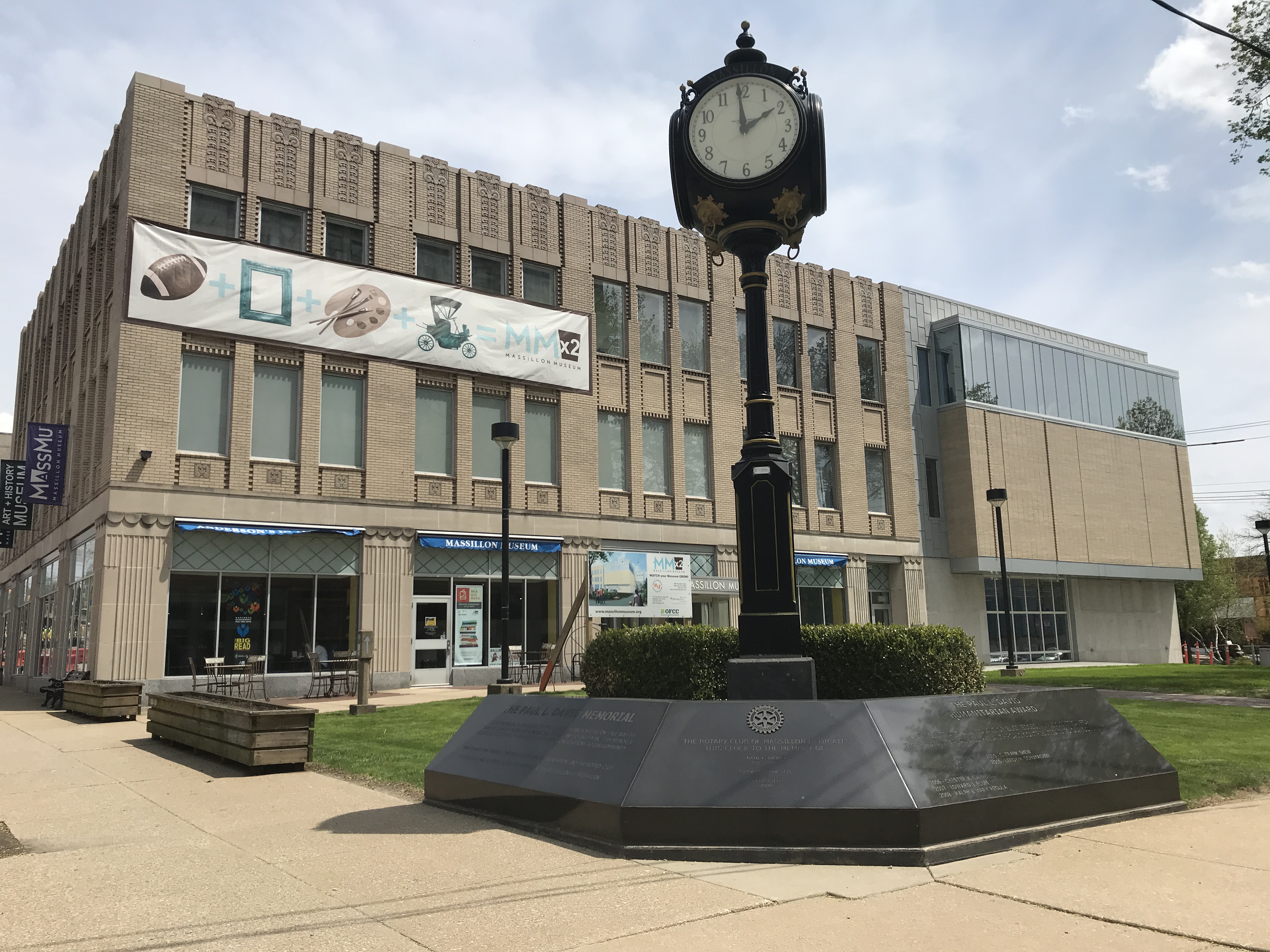
Massillon Museum expansion, 2019
Click here to read more about the expansion!
The architectural firm of vanDijk, Pace, Westlake and Partners of Cleveland was contracted for remodeling plans and a $1.9 million dollar renovation was begun in 1994. On May 12, 1996, the new “state of the art” contemporary Massillon Museum opened its doors to the public with a “Gala Opening” and exhibit.
